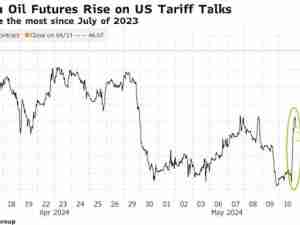Wholesale Prices in U.S. Climb by Most Since September 2012
By: Shobhana Chandra | Feb 14 2017 at 08:58 AM | International Trade
U.S. wholesale prices jumped in January by the most since September 2012, led by higher costs of gasoline and indicating inflation is beginning to stir.
The 0.6 percent gain in the producer-price index followed a 0.2 percent advance the prior month, a Labor Department report showed Tuesday. The median forecast in a Bloomberg survey called for a 0.3 percent rise. The measure was up 1.6 percent from a year earlier, also more than forecast.
The pickup in prices, which also reflected higher retailer and wholesaler margins, is the latest signal that broader inflation continues to move toward the goal of Federal Reserve policy makers. While rising demand and higher commodity costs are reviving price pressures in the production pipeline, renewed strength in the dollar may pose a headwind.
Projections for the producer-price index ranged from an advance of 0.2 percent to 0.5 percent, according to the Bloomberg survey.
Wholesale prices of goods increased 1 percent in January, the most since May 2015. Half of that pickup was due to a 12.9 percent surge in gasoline. Costs of pharmaceuticals, scrap steel, heating oil, natural gas and pork also moved higher.
Higher raw materials costs are pushing up inflation across the globe. In China, producer prices climbed in January by the most since 2011.
Services inflation in the U.S. accelerated, with prices increasing 0.3 percent in January following a 0.1 percent rise the prior month, the Labor Department’s data showed. More than 80 percent of the advance was traced to higher margins at retailers and wholesalers. Transportation and warehousing services prices climbed 1.1 percent.
Excluding food and energy, wholesale prices rose 0.4 percent from the previous month after a 0.1 percent rise. Those costs were 1.2 percent higher than in January 2016.
Producer costs excluding volatile components such as food, energy, and also eliminating trade services advanced 0.2 percent after climbing 0.1 percent the previous month. Some economists prefer this reading because it strips out the most volatile components of PPI. Compared with a year earlier, this core measure increased 1.6 percent after a 1.7 percent gain.
The producer price gauge is one of three monthly inflation reports released by the Labor Department. The other two are import costs and consumer prices.








